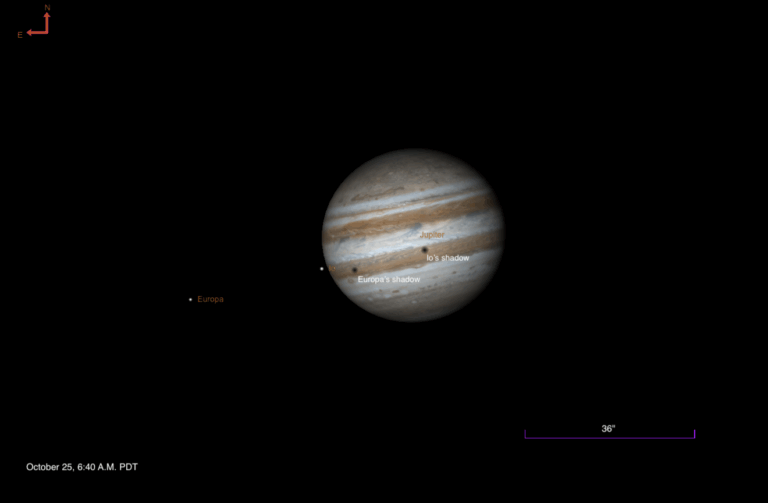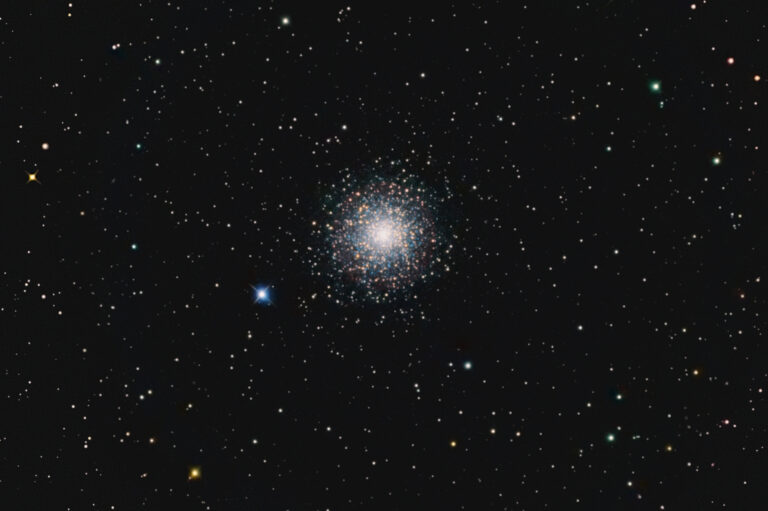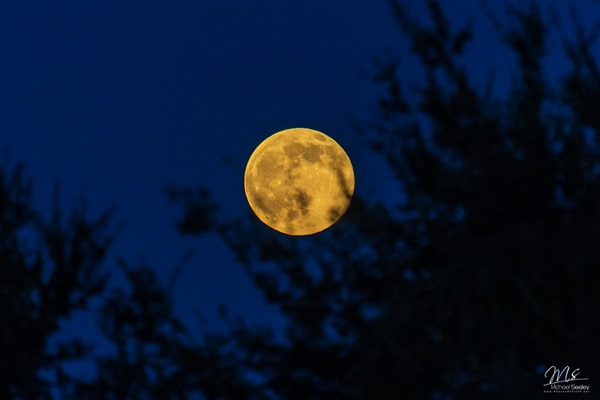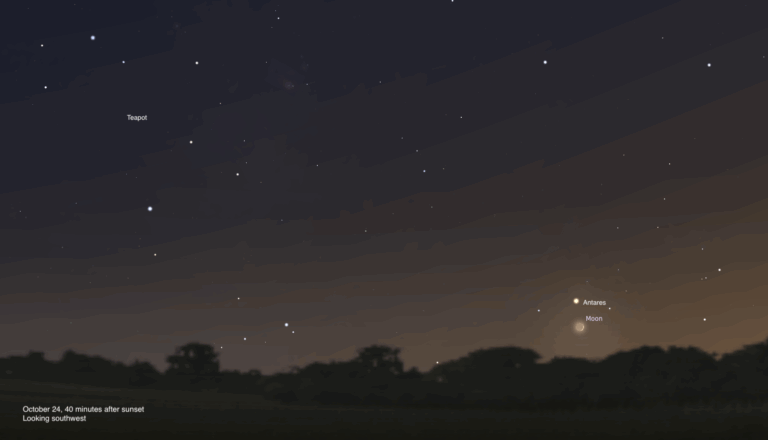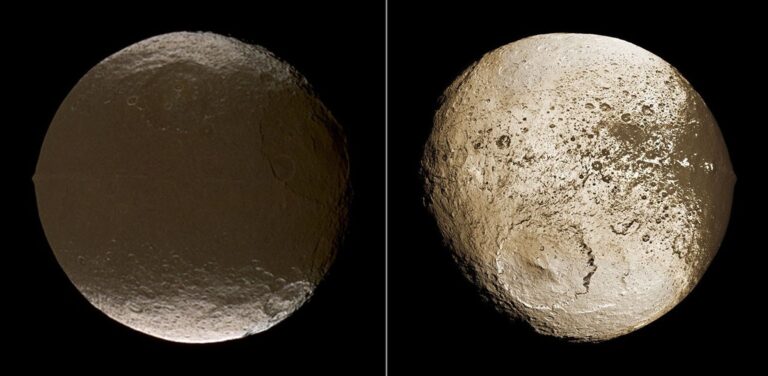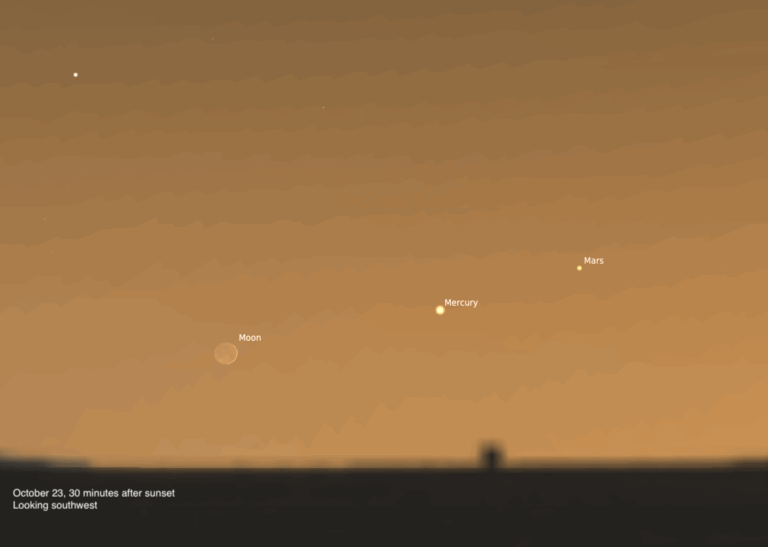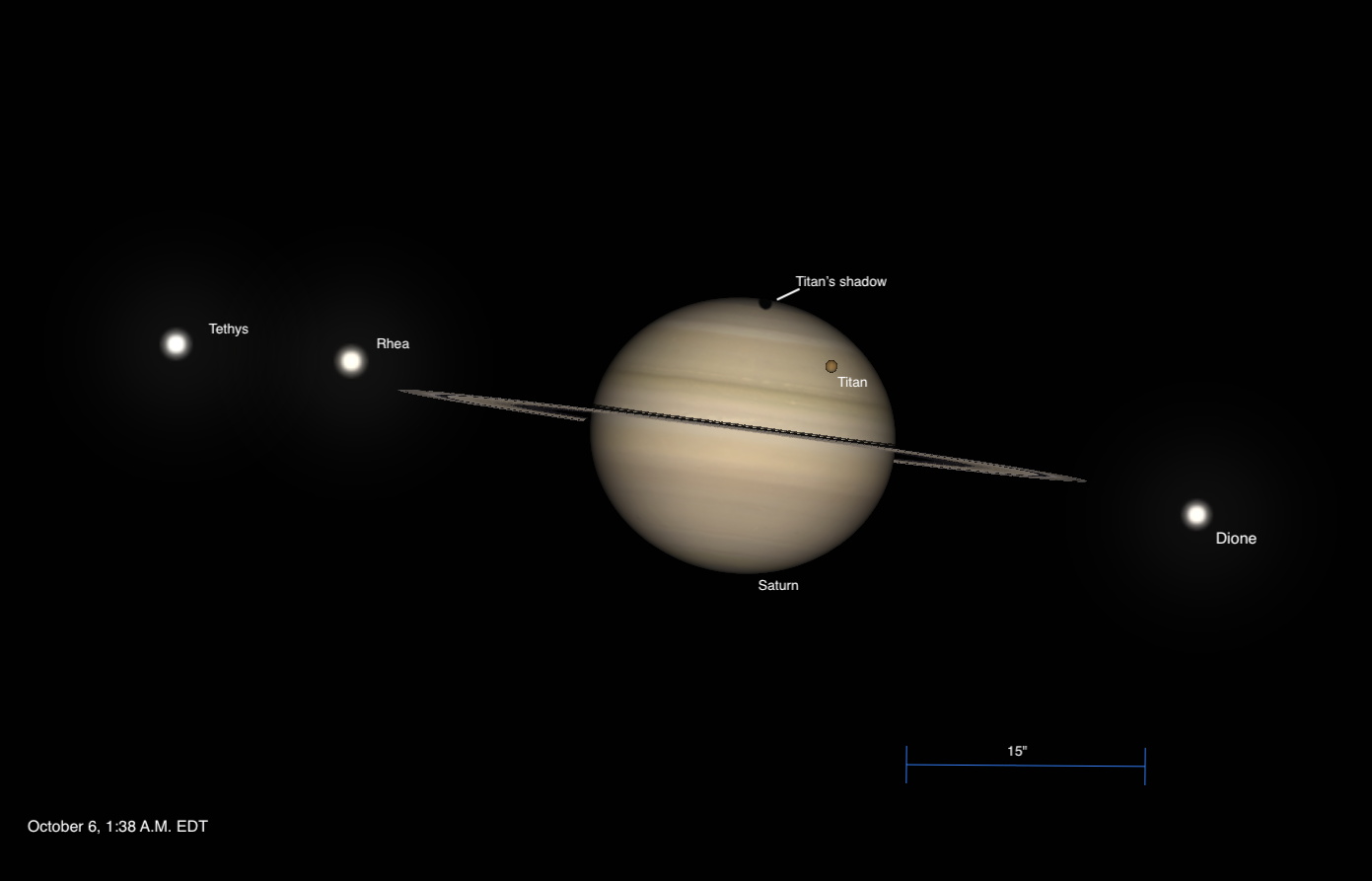
Key Takeaways:
The nearly Full Moon passes 4° north of Saturn at 11 P.M. EDT and sits close to the ringed planet all night. Despite our satellite’s proximity, you’ll want your telescope trained on Saturn this evening to catch the last in the current series of Titan shadow transits — there won’t be another until 2040!
Around 9 P.M. local daylight time, Saturn is some 30° high in the southeast, beneath the Circlet of Pisces (which may be difficult to see) and to the lower right of the Moon. Saturn is the brightest point of light in the region, so should still be visible even with Luna nearby. You’ll need a telescope to observe the transit, which begins around 9:25 p.m. EDT as Titan crosses in front of Saturn’s northeastern limb. (Note this occurs during twilight for the Mountain time zone and while the Sun is still up for those on the U.S. West Coast.) It takes nearly 20 minutes for the moon to cross entirely onto the disk.
Titan crosses the planet from east to west and reaches roughly halfway across the disk around midnight EDT (as the date becomes October 6 in the Eastern time zone only). Shortly after, the moon’s shadow finally appears on the disk at 12:26 a.m. EDT — note that it appears north of Titan, crossing Saturn’s northern polar region. A little over an hour later, the shadow has reached halfway in its journey, and finally reaches the northwestern limb around 2:17 A.M. EDT (now early on the 6th in all but the Pacific time zone). It takes some 20 minutes for the shadow to disappear.
As the shadow is sliding away, Titan reaches the saturnian limb at 2:23 A.M. EDT and finally ends its transit shortly before 2:45 A.M. EDT, just minutes after its shadow has fully gone.
Sunrise: 7:01 A.M.
Sunset: 6:35 P.M.
Moonrise: 5:49 P.M.
Moonset: 5:05 A.M.
Moon Phase: Waxing gibbous (97%)
*Times for sunrise, sunset, moonrise, and moonset are given in local time from 40° N 90° W. The Moon’s illumination is given at 12 P.M. local time from the same location.
For a look ahead at more upcoming sky events, check out our full Sky This Week column.

